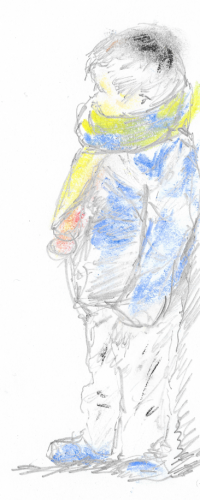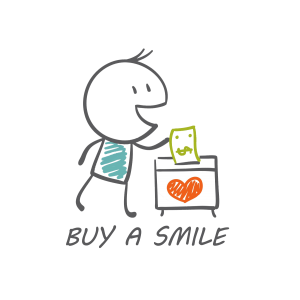Special thanks to the United Kingdom Down’s Syndrome Association for their Contribution on the FAQs
FAQ
Frequently Asked Questions
If you don't see all the answers to your questions please contact Sean’s Club.
What is Down syndrome?
Down syndrome is a genetic disorder caused by an extra chromosome, often the 21st chromosome, therefore it is also known as trisomy 21. It is associated with a lower cognitive ability and slower physical growth, and can be accompanied by others physical complications such as heart defects.
How many types of down syndrome there are?
There are three types of Down syndrome:
-Trisomy 21 (95%) extra number 21 chromosomes in every cell
-Translocation (3-5%) extra chromosome 21 is attached to another chromosome in every cell
-Mosaic (1-2 %) mixture of cells, some with an extra chromosome 21 and normal cells.
What are the symptoms?
Common physical signs of Down syndrome include:
-Decreased or poor muscle tone
-Short neck, with excess skin at the back of the neck
-Flattened facial profile and nose
-Small head, ears, and mouth
-Upward slanting eyes, often with a skin fold that comes out from the upper eyelid and covers the inner corner of the eye
-White spots on the colored part of the eye (called Brushfield spots)
-Wide, short hands with short fingers
-A single, deep, crease across the palm of the hand
-A deep groove between the first and second toes
Many children with Down syndrome are also born with heart, intestine, ear, or breathing problems. These health conditions often lead to other problems, such as respiratory infections or hearing loss. But most of these problems can be treated.
How is Down syndrome diagnosed?
Your doctor may suggest that you have tests during pregnancy to find out if your baby has Down syndrome. You may decide to have:
-Screening tests, such as an ultrasound or a blood test during your first or second trimester. These can help show if the developing baby is at risk for Down syndrome. But these tests sometimes give false-positive or false-negative results.
-Diagnostic tests, such as chorionic villus sampling or amniocentesis. These can show if a baby has Down syndrome. You may want to have these tests if you have abnormal results from a screening test or if you are worried about Down syndrome.
Sometimes a baby is diagnosed after birth. A doctor may have a good idea that a baby has Down syndrome based on the way the baby looks and the results of a physical exam. To make sure, the baby’s blood will be tested. It may take 2 to 3 weeks to get the test results.
What kind of care will your child need?
Starting soon after birth, a baby with Down syndrome will be tested for health problems, such as eye, ear, or thyroid problems. The sooner these problems are found, the better they can be managed. Regular doctor visits can help your child stay in good health.
Your doctor will make a treatment plan that meets your growing child’s needs. For example, most children with Down syndrome need speech therapy and physical therapy. Teens and adults with Down syndrome may need occupational therapy to learn job skills and learn how to live on their own. Counseling may help with social skills and emotional issues.
What are people with Down’s syndrome like?
People with Down’s syndrome are all unique individuals with their own personalities, family backgrounds and preferences that make them who they are. Like most people, they learn at school, have interests, hobbies and talents, and have friends and relationships.
Everyone with Down’s syndrome will have a learning disability. Having a learning disability means that it takes longer for a person to process information and to learn new skills and tasks. A learning disability will last throughout a person’s life.
Sometimes people are told that people with Down’s syndrome are always ‘happy’ or ‘smiling’. This is not the case. People with Down’s syndrome experience the same range of moods and emotions as anyone else.
What is UK Early Intervention?
In the UK, there is a program called ‘Early Intervention’ for children with Down’s syndrome.
Early intervention is an umbrella term for a collection of services that can help babies and toddlers by giving early support for them and their families, with a focus on enhancing development. Practitioners from different professions may engage with families to provide the support they need, for example, to promote play and learning and to support communication, speech and language.
Raising the awareness in Japan to this UK program and others like is one of the cornerstones of Sean’s Club and it is our mission to effect change to offer Early Intervention in Japan.
What should I do if I meet someone with Down’s syndrome?
People sometimes feel nervous or unsure what to do when they first speak to someone with Down’s syndrome. After they have met someone, people often wonder what they were so worried about!
When you meet someone for the first time, talk to him or her and get to know the person as you would with anyone else. You may need to check if the person understands what you are saying and explain it again in a different way if she or he doesn’t seem to understand. Take the lead from the person and don’t worry about ‘getting it wrong’.
What is the correct terminology regarding people with Down’s syndrome?
Down’s syndrome is not a disease and therefore people with Down’s syndrome do not “suffer”, nor are they “victims” of their condition. Down’s syndrome is only a part of the person; they should not be referred to as “a Down’s” or “a Down’s person”. People with Down’s syndrome are all unique individuals and should be acknowledged as a person first and foremost.
How does Down’s syndrome affect development?
Children with Down’s syndrome generally take longer to reach developmental milestones and they will need some additional support to learn new skills, as well as extra help when they go to school.
Just as with all children there is a great deal of individual variation in the age at which different skills develop, and the way the syndrome affects a person’s development, learning and health varies widely.
What is life like for people with Down’s syndrome?
The quality of life, life expectancy and role in the community for people with Down’s syndrome have gradually been transformed as education and support have improved. There are now more opportunities for people with Down’s syndrome to lead the lives they want to.
Important Down Syndrome Thoughts
The most critical thing to remember is that everyone with Down’s syndrome is an individual, with their own strengths and weaknesses and personality traits that make them who they are.
Nothing done before or during pregnancy can cause Down’s syndrome. It occurs in all races, social classes and in all countries throughout the world. Anyone can have a baby with Down’s syndrome.
There are certain physical characteristics that are more common in people with Down’s syndrome. However, they will look more like members of their own family than other people with the condition.
People with a learning disability may not learn things as quickly as other people and they may need more help and support to learn. This does not mean that people cannot learn new information and skills.
All the health conditions more common in people with Down’s syndrome are seen in the general population and many people will lead a healthy lifestyle with the right support and health checks.


